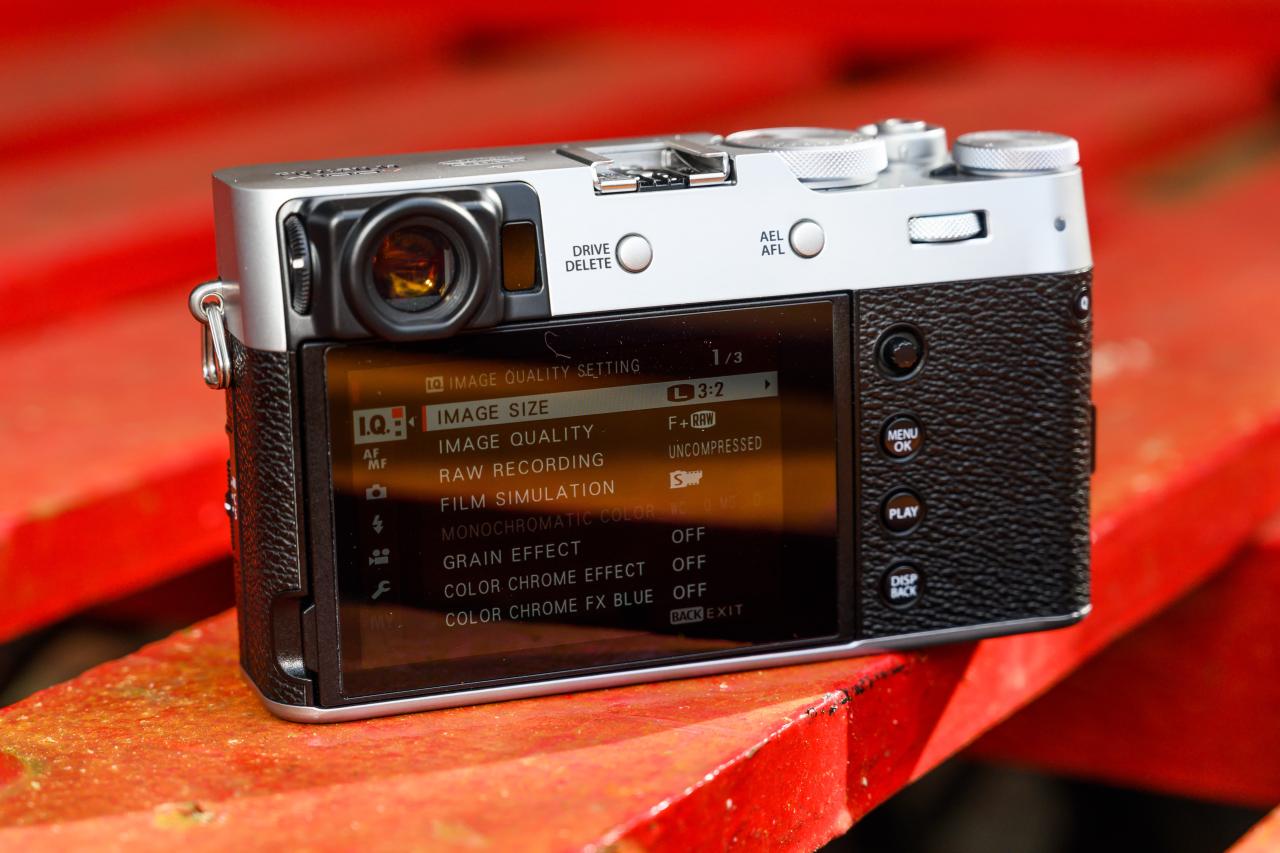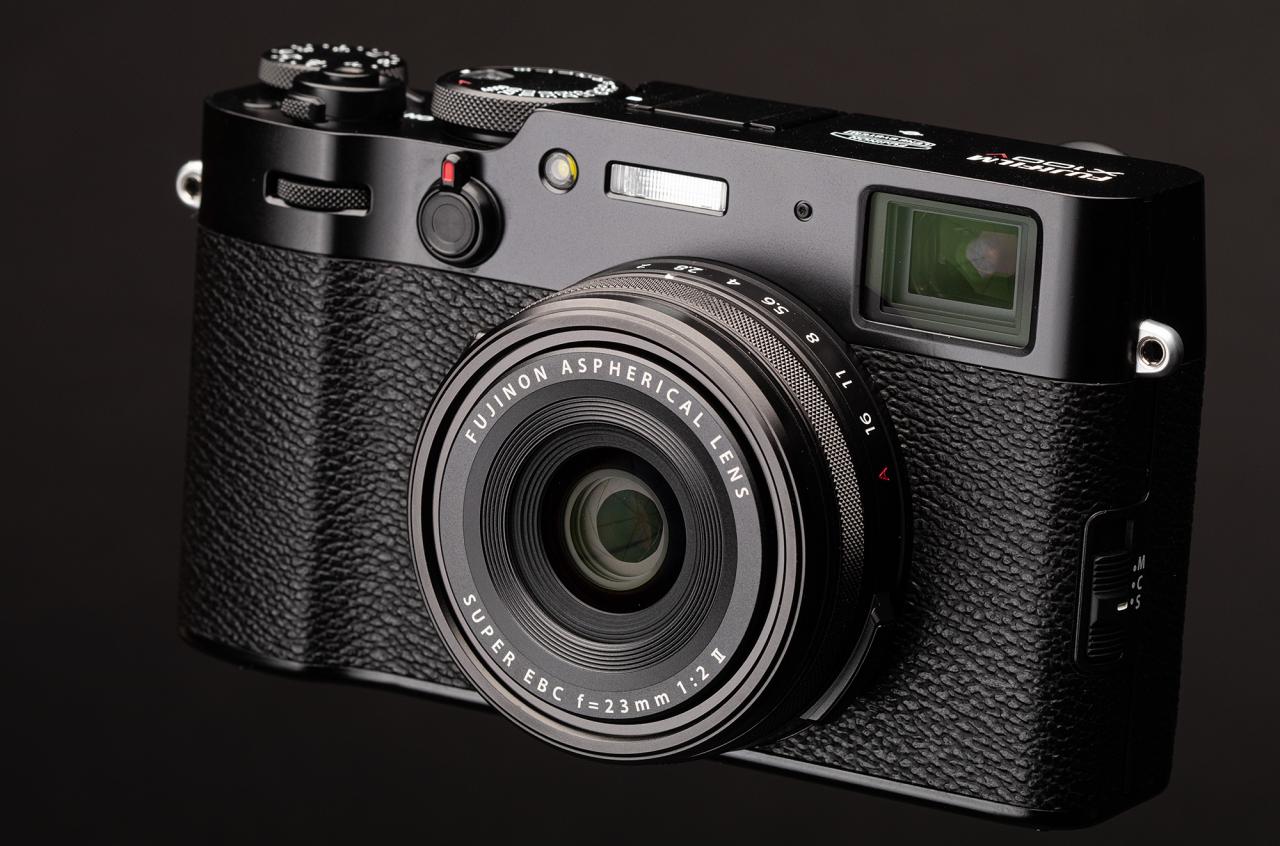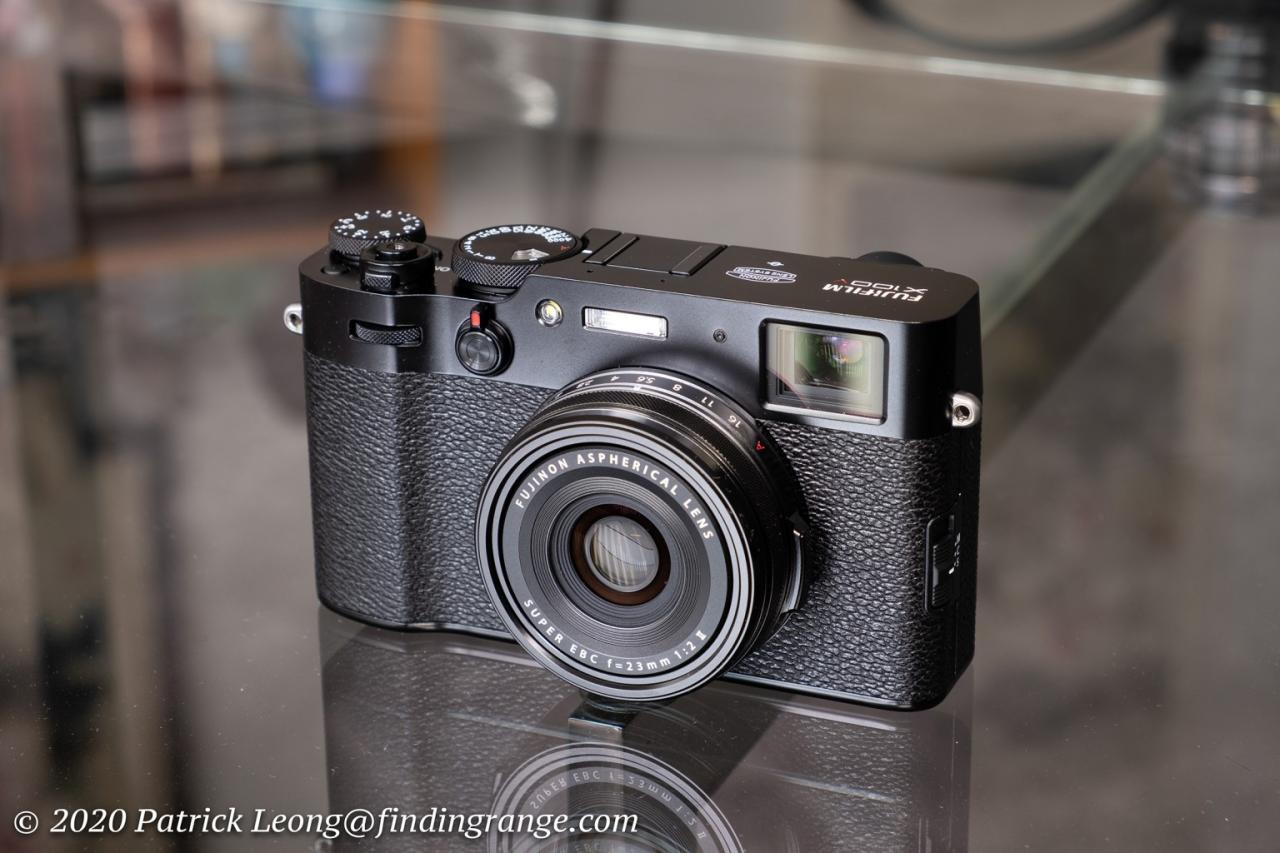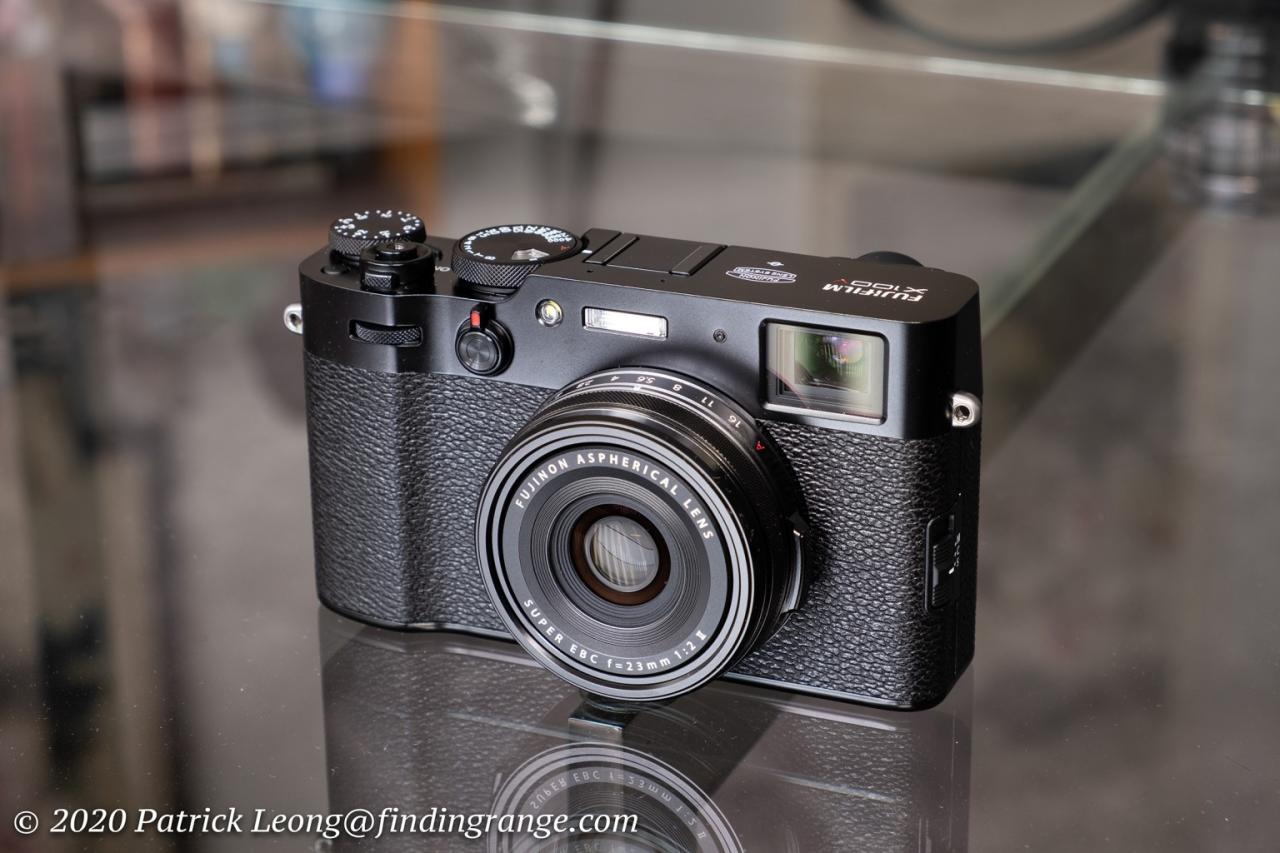Fujifilm X100V: The compact camera that punches well above its weight. This in-depth review explores its impressive features, exceptional image quality, and intuitive user experience, delving into its performance across various photography genres. We’ll examine its strengths and weaknesses, compare it to competitors, and ultimately determine whether the X100V lives up to its considerable hype.
From its retro-inspired design to its advanced image processing capabilities, the X100V offers a unique blend of classic aesthetics and modern technology. This review will guide you through a detailed exploration of this remarkable camera, providing insights into its functionality, image characteristics, and overall user experience. We’ll cover everything from its impressive autofocus system to its versatile film simulations, equipping you with the knowledge needed to decide if the X100V is the right camera for you.
Fujifilm X100V: A Deep Dive
The Fujifilm X100V, a compact camera with a retro aesthetic and impressive capabilities, has solidified its place as a favorite among photographers. This article delves into its features, performance, user experience, and how it compares to competitors, offering a comprehensive overview for both potential buyers and existing users.
Fujifilm X100V: Camera Features and Specifications

The X100V boasts a 26.1MP X-Trans CMOS 4 sensor, renowned for its exceptional detail and dynamic range. Its fixed 23mm f/2 lens (35mm equivalent) is sharp and versatile, perfect for street photography and everyday snapshots. The autofocus system, significantly improved from its predecessor, utilizes phase-detection pixels for faster and more accurate focusing.
| Feature | X100V | X100F |
|---|---|---|
| Sensor | 26.1MP X-Trans CMOS 4 | 24.3MP X-Trans CMOS III |
| Lens | 23mm f/2 | 23mm f/2 |
| Autofocus | Phase-detection autofocus | Contrast-detection autofocus |
| Film Simulations | Classic Neg., Provia, Velvia, Astia, Eterna, Acros, Monochrome | Classic Chrome, Provia, Velvia, Astia, Monochrome |
Fujifilm’s renowned film simulations are a key feature. Provia offers natural colors, Velvia delivers vibrant saturation, Astia provides soft, muted tones, and Classic Neg. emulates the look of classic negative film. Acros provides a fine-grained monochrome look, while Eterna mimics the cinematic feel of motion picture film. These simulations significantly impact the image’s overall aesthetic, allowing for creative control without extensive post-processing.
| Camera | Video Resolution | Frame Rate |
|---|---|---|
| Fujifilm X100V | 4K/30p | 1080p/120p |
| Sony RX1R II | 4K/30p | 1080p/60p |
| Ricoh GR III | 4K/30p | 1080p/60p |
X100V Image Quality and Performance
The X100V consistently delivers high-quality images across a range of lighting conditions. Its high ISO performance is commendable, with minimal noise even at ISO 6400. Low-light photography benefits from the fast f/2 lens and effective in-body image stabilization.
The camera’s dynamic range is impressive, capturing details in both highlights and shadows. Images exhibit a pleasing contrast, with well-defined textures and a three-dimensional look. For example, a cityscape shot at sunset showcases detailed building facades in the brightly lit areas while retaining detail in the shadowed streets below.
- Images from the X100V exhibit exceptional sharpness and clarity, comparable to larger, more expensive cameras.
- Detail retention is excellent, even in challenging lighting conditions.
- Compared to other compact cameras, the X100V often surpasses them in terms of overall image quality and dynamic range.
User Experience and Ergonomics

The X100V’s compact size and lightweight design make it highly portable. The physical controls are well-placed and intuitive, allowing for quick adjustments on the fly. The camera’s retro design, however, might not appeal to everyone.
- Pros: Compact size, intuitive button layout, satisfying tactile feedback from physical controls.
- Cons: Limited button customization options, relatively small viewfinder.
The user interface is generally straightforward and easy to navigate. The menu system is well-organized, and frequently accessed functions are easily accessible.
| Control | Purpose |
|---|---|
| Shutter Speed Dial | Adjusts the shutter speed |
| Aperture Ring | Adjusts the aperture |
| ISO Dial | Adjusts the ISO sensitivity |
| Focus Mode Selector | Selects the autofocus mode |
X100V in Different Photography Genres
The X100V’s compact size and fast lens make it an excellent choice for street photography. Its discreet nature allows for candid shots, while the quick autofocus ensures sharp focus even in fast-paced environments. The 35mm equivalent focal length is ideal for capturing environmental portraits and street scenes.
While not ideally suited for extreme wide-angle landscapes, the X100V can produce stunning landscape images. Its ability to capture detail and dynamic range, combined with the use of film simulations, allows for creative interpretation of the scene. A shot of a mountain range at sunrise, for instance, can be rendered with vibrant colors using Velvia or a more subdued, moody atmosphere with Classic Neg.
The X100V can be effectively used for portrait photography. The 35mm equivalent focal length creates a natural perspective, flattering to the subject. Careful use of aperture and distance allows for creative control of depth of field, emphasizing the subject while blurring the background.
Accessories and Customization
A range of accessories enhances the X100V’s functionality. These include additional carrying cases, filters (such as ND filters for long exposures), and lens adapters for using other lenses. Firmware updates regularly introduce new features and improvements, while third-party software can further expand the camera’s capabilities.
The Fujifilm X100V, with its renowned retro design and exceptional image quality, remains a popular choice for street photography. Its compact size makes it ideal for capturing candid moments, unlike some bulkier options; however, for more extensive shoots requiring diverse lenses, one might consider a system like the one showcased at port dover camera. Ultimately though, the X100V’s fixed lens and intuitive controls provide a unique and satisfying shooting experience for many photographers.
- Street Photography: A small, lightweight carrying case and an ND filter for long exposures in bright conditions.
- Landscape Photography: A tripod and a polarizing filter to enhance colors and reduce glare.
- Portrait Photography: A reflector to fill in shadows and a teleconverter (though this limits the lens’s versatility).
Comparing the X100V to Competitors, Fujifilm x100v

The X100V competes with other premium compact cameras such as the Sony RX1R II and the Ricoh GR III. These cameras offer similar image quality but differ in terms of features, lens choice, and overall design philosophy.
The Fujifilm X100V’s compact size makes it ideal for street photography, capturing candid moments effortlessly. However, even the most discreet photographer needs to be aware of airspace regulations; news reports, like this one about a nj drone shot down , highlight the importance of responsible drone operation. Returning to the X100V, its exceptional image quality ensures that every shot, whether of bustling city streets or tranquil landscapes, is a keeper.
| Feature | Fujifilm X100V | Sony RX1R II | Ricoh GR III |
|---|---|---|---|
| Sensor | 26.1MP X-Trans CMOS 4 | 42.4MP Full-frame sensor | 24.2MP APS-C sensor |
| Lens | 23mm f/2 | 35mm f/2 | 28mm f/2.8 |
| Autofocus | Hybrid AF | Contrast Detection AF | Hybrid AF |
| Price | Mid-range | High-end | Mid-range |
The X100V’s strengths lie in its unique blend of retro aesthetics, excellent image quality, and intuitive controls. Its fixed lens, while limiting in some situations, provides a consistent and predictable shooting experience. However, its lack of interchangeable lenses and potentially higher price point compared to some competitors might be drawbacks for certain users.
The Fujifilm X100V proves to be a compelling choice for photographers seeking a compact yet powerful camera. Its exceptional image quality, intuitive handling, and versatile feature set make it a strong contender in its class. While some might find the price point a barrier to entry, the overall experience and the consistently stunning images produced justify the investment for those who prioritize quality and portability.
Whether you’re a seasoned professional or an enthusiastic amateur, the X100V deserves serious consideration.
Query Resolution
What is the battery life like on the Fujifilm X100V?
Battery life is decent, typically around 350 shots per charge, but can vary depending on usage.
Does the Fujifilm X100V have image stabilization?
No, it relies on in-lens stabilization and fast shutter speeds to minimize blur.
Can I use external microphones with the Fujifilm X100V?
Yes, it has a 3.5mm microphone jack for external audio input.
What type of memory cards does the X100V use?
It uses SD cards (SD, SDHC, and SDXC).
